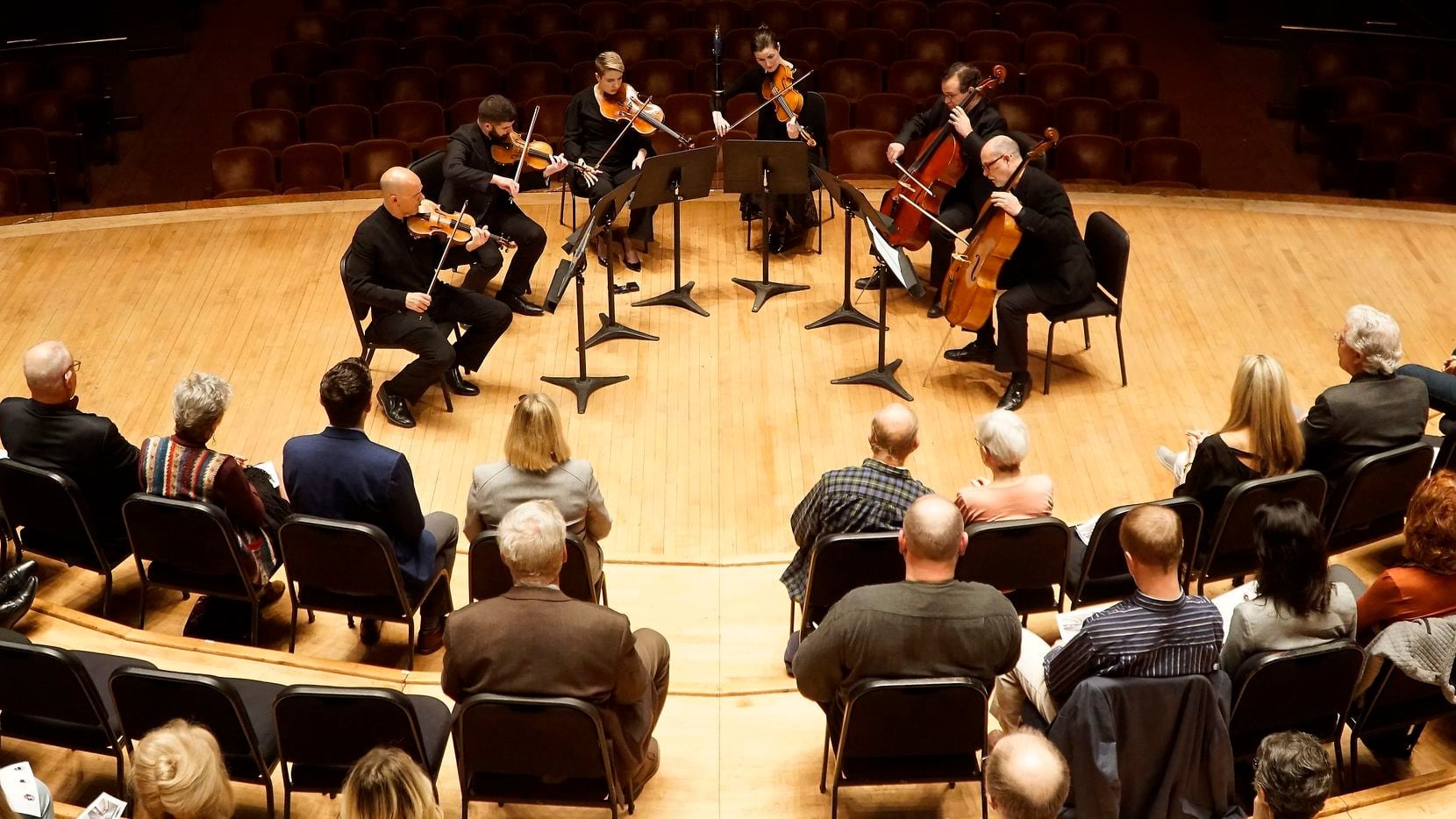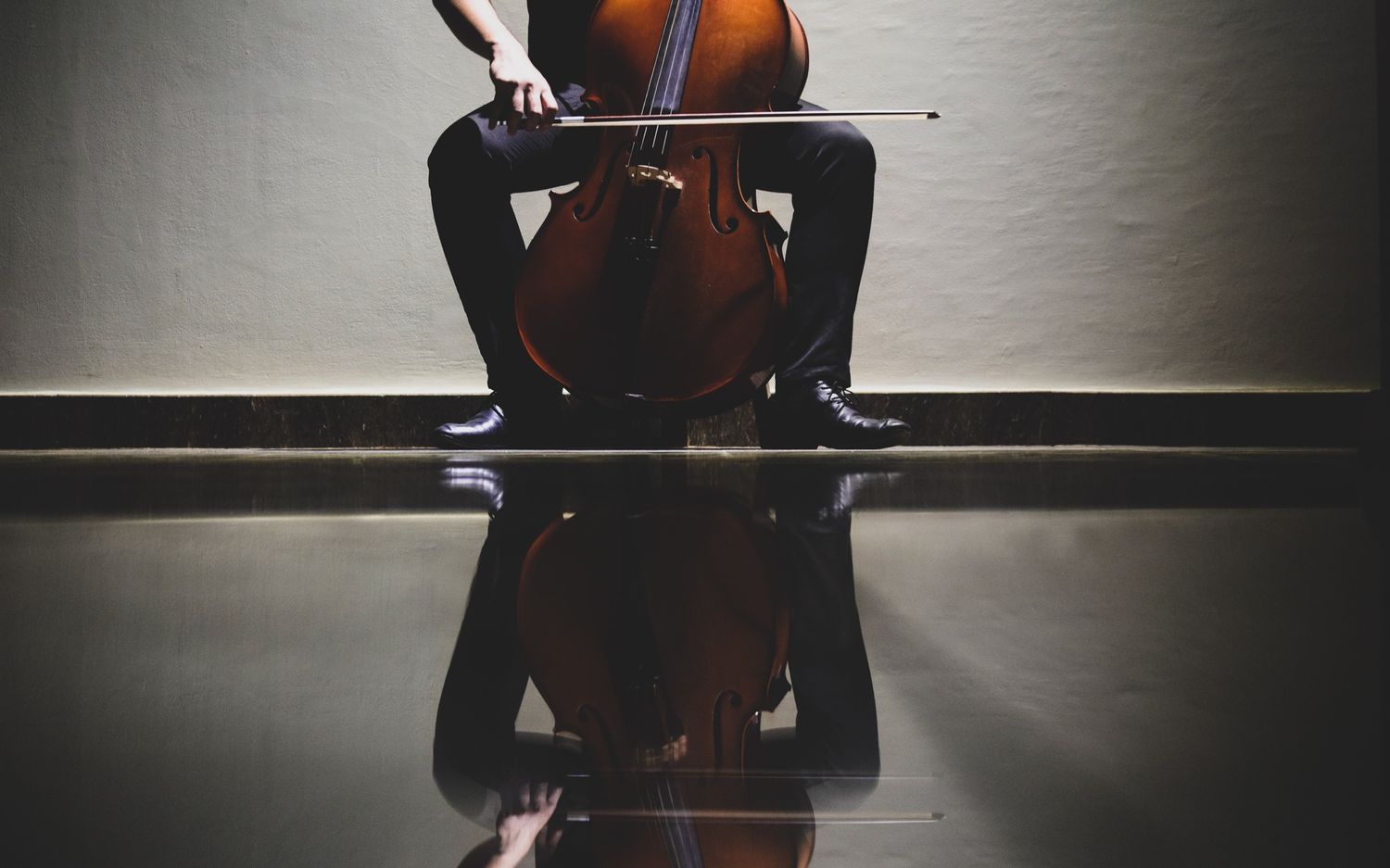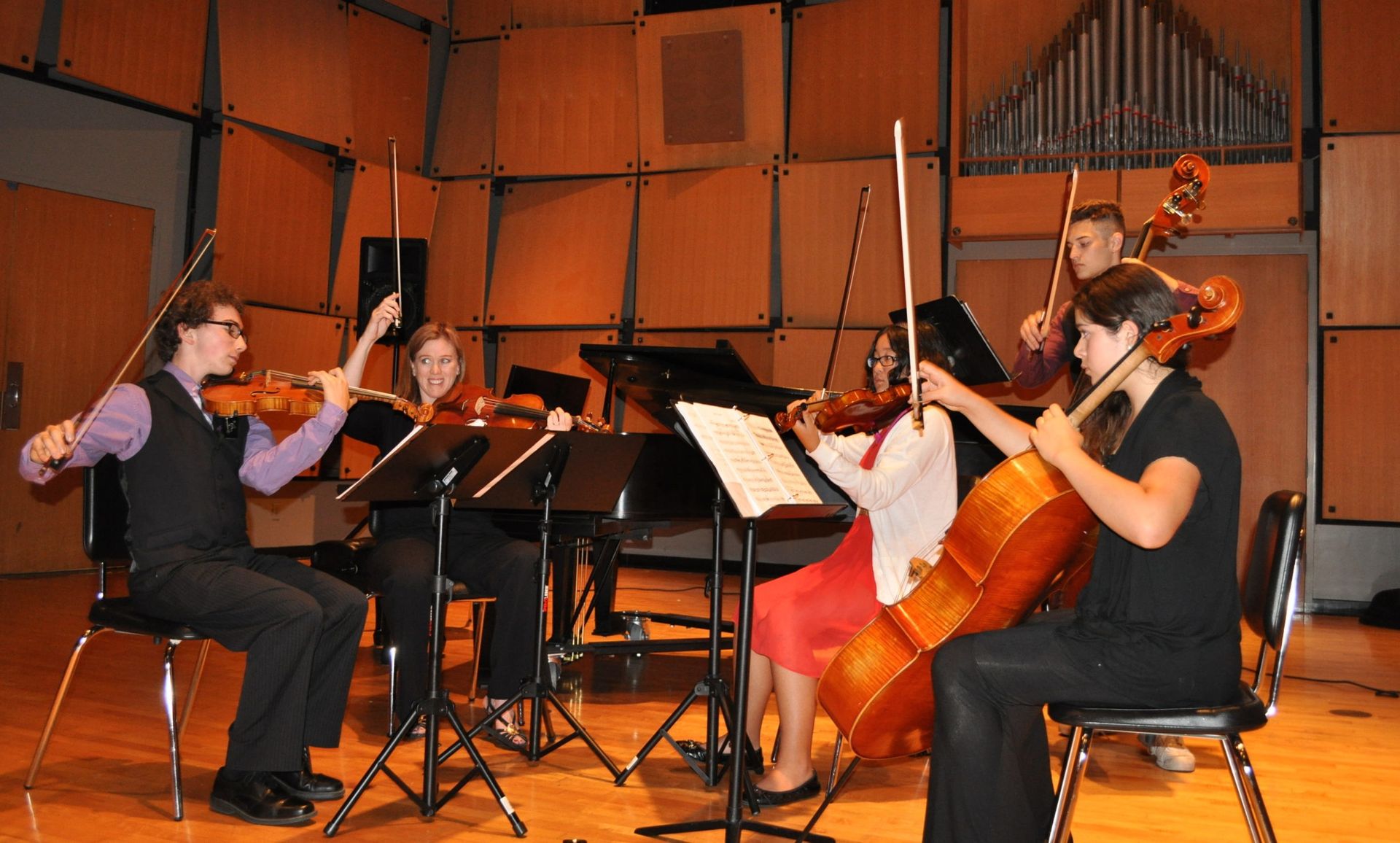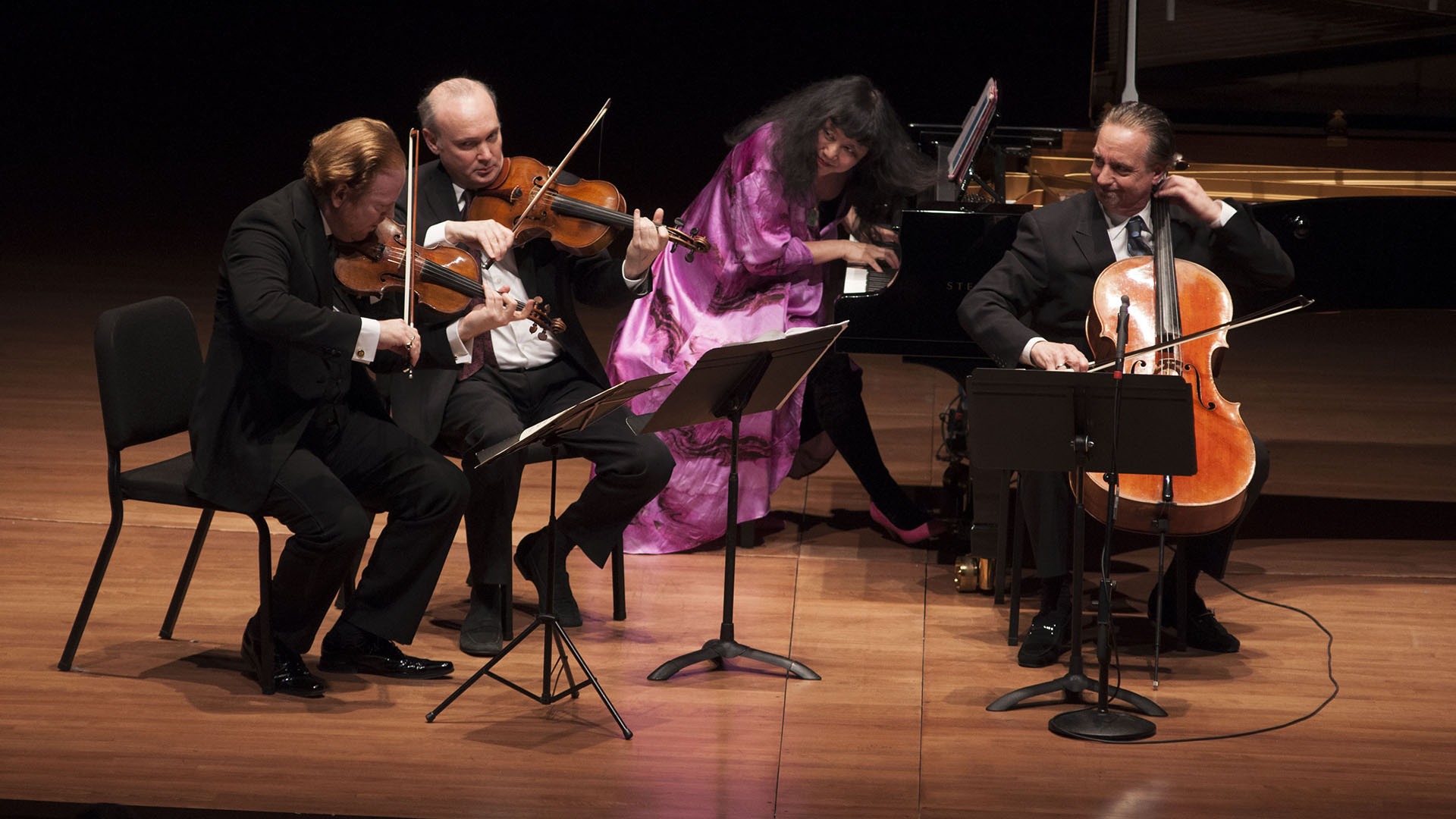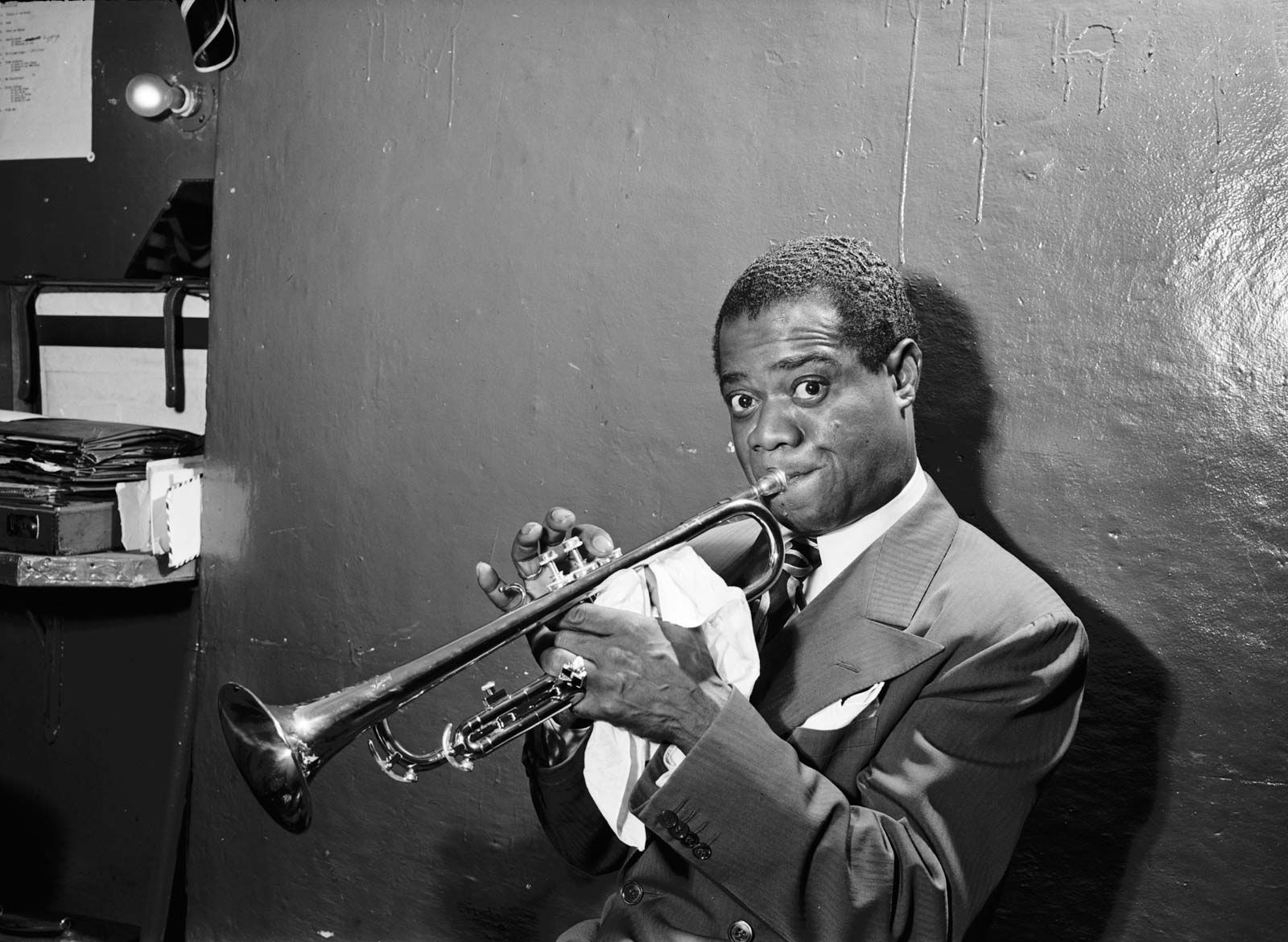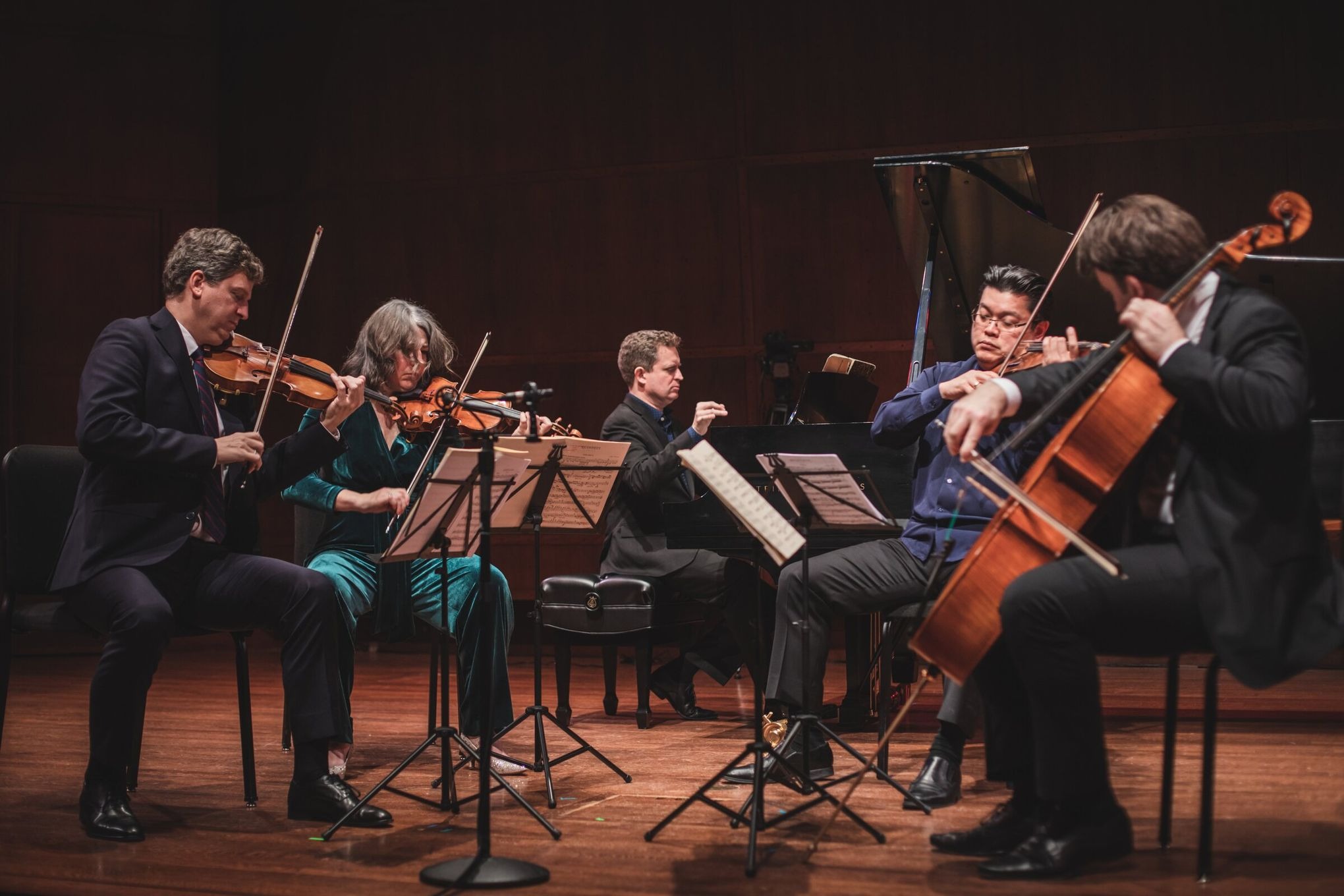Home>Events & Info>Chamber Music>What Was The Most Common Type Of Chamber Music In The Classical Era?
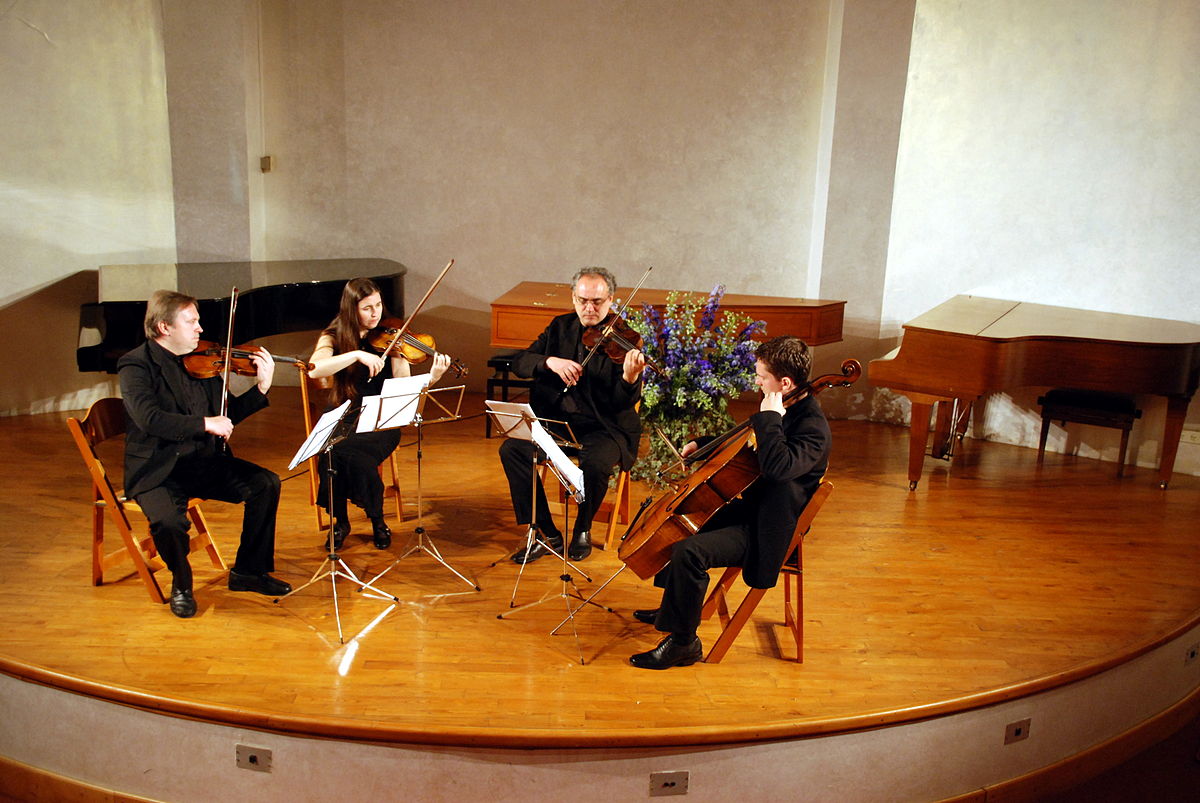

Chamber Music
What Was The Most Common Type Of Chamber Music In The Classical Era?
Published: January 4, 2024
Discover the most common type of chamber music in the classical era. Explore the rich history and intricate compositions of this beloved genre.
(Many of the links in this article redirect to a specific reviewed product. Your purchase of these products through affiliate links helps to generate commission for AudioLover.com, at no extra cost. Learn more)
Table of Contents
Introduction
Chamber music holds a special place in the world of classical music. It represents an intimate and collaborative form of musical expression where a small group of musicians come together to perform intricate compositions. The Classical era, which spanned from the mid-18th century to the early 19th century, was a pivotal period in the development of chamber music.
During this era, composers like Mozart, Haydn, and Beethoven revolutionized chamber music, composing masterpieces that continue to be celebrated and performed today. In this article, we will explore the most common types of chamber music in the Classical era and dive into their characteristics.
Chamber music is often performed in smaller venues such as private homes, salons, or chamber halls, where its delicate nuances and subtleties can be fully appreciated. Unlike symphonies or operas, chamber music does not require a conductor, as the musicians communicate and coordinate with each other through their playing.
One of the defining aspects of chamber music is its intimate nature, with each instrument having a unique voice and an essential role to play in the overall composition. Through careful listening and precise execution, chamber musicians create a musical conversation that is both captivating and engaging for the audience.
In the following sections, we will delve into the various types of chamber music that were prominent during the Classical era, examining their characteristics, instrumentation, and significance in the musical landscape of the time.
Definition of Chamber Music
Chamber music is a genre of classical music that is composed for a small ensemble of instruments, typically ranging from two to nine musicians. Unlike orchestral compositions, which involve larger ensembles and often require a conductor, chamber music is performed without a conductor, relying on the musicians’ collaborative skills and intimate communication to create a cohesive and expressive performance.
The term “chamber music” originated from the practice of performing music in a chamber or small private room, where the intimate setting allowed for close interaction between the musicians and the audience. This type of music was especially popular during the Classical era and continues to be an important genre in the world of classical music today.
One of the key characteristics of chamber music is its emphasis on individual voices and intricate interplay between instruments. Each musician has a unique role within the ensemble, contributing to the overall musical texture and harmony. By showcasing the distinct qualities of each instrument, chamber music allows for a rich and diverse musical experience.
Chamber music compositions can range from duets to larger ensembles, such as string quartets, piano trios, or wind quintets. The compositions often highlight the technical skill and virtuosity of the performers, as well as their ability to listen and respond to one another in real-time.
Chamber music is known for its intimate and conversational qualities, where musicians engage in a musical dialogue throughout the performance. This aspect of the genre creates a sense of immediacy and connection between the musicians and the audience, drawing listeners into the intricate musical tapestry.
Overall, chamber music is a genre that encompasses a wide range of compositions and styles. From delicate and lyrical melodies to energetic and virtuosic passages, chamber music offers a captivating and immersive musical experience that continues to captivate audiences around the world.
Overview of the Classical Era
The Classical era, which encompassed roughly the mid-18th century to the early 19th century, was a period of remarkable artistic and cultural achievement. It was characterized by the emergence of new musical forms, refining of musical styles, and the rise of influential composers who would shape the course of classical music for centuries to come.
During this era, many significant historical events took place, such as the American and French revolutions, which had a profound impact on society and the arts. These societal changes influenced the cultural landscape and contributed to the development and evolution of chamber music in the Classical era.
One of the key distinguishing features of the Classical era was the shift in musical style from the complex and ornate Baroque period to a simpler, more balanced and structured approach. Composers during this time, such as Wolfgang Amadeus Mozart, Franz Joseph Haydn, and Ludwig van Beethoven, sought to create music that was easily accessible to a wider audience while still maintaining artistic integrity.
The Classical era witnessed the rise of the classical symphony, which became the backbone of orchestral music. Composers crafted symphonies with distinct thematic development, clear harmonic progression, and balanced orchestration. The symphony served as a precursor to the development of chamber music, as many composers experimented with smaller ensembles and more intimate settings.
Chamber music flourished during the Classical era as composers explored and refined this intimate form of musical expression. The close collaboration among the musicians allowed for greater experimentation and innovation, leading to the creation of some of the most beloved chamber music compositions in history.
Composers of the time sought to strike a balance between individual expression and collective unity within their chamber music compositions. The result was a collection of works that showcased the musical talents of each instrument while maintaining a harmonious and cohesive whole.
Notably, the Classical era saw the development of standardized instrumentation for chamber music ensembles. Composers wrote pieces specifically tailored to certain instrument combinations, such as the string quartet, piano trio, and wind quintet, which became the most common and influential forms of chamber music during this era.
In the next sections, we will explore the characteristics and significance of these types of chamber music in greater detail.
Characteristics of Chamber Music in the Classical Era
Chamber music in the Classical era possessed distinct characteristics that set it apart from other forms of music. Composers during this period embraced certain compositional techniques and stylistic elements that became hallmarks of the genre. Understanding these characteristics helps us appreciate the beauty and significance of chamber music in the Classical era.
1. Balance and Clear Structure: Classical-era chamber music emphasized balance, clarity, and a clear formal structure. Composers carefully organized their compositions using symmetrical phrases, balanced motifs, and predictable harmonic progressions. This sense of structure provided a solid foundation for the musicians to communicate and engage with one another effectively.
2. Melodic Beauty and Elegance: Chamber music in the Classical era often featured melodies that were elegant, lyrical, and memorable. Composers crafted captivating themes that showcased the expressive qualities of each instrument within the ensemble. These melodies became the focal points of the compositions, creating a sense of emotional depth and connection with the listeners.
3. Dynamic Contrast: Composers in the Classical era employed dynamic contrast to highlight the dramatic and expressive elements of their chamber music compositions. They skillfully incorporated changes in volume, from soft and delicate passages to powerful and energetic sections, creating a heightened sense of musical tension and release.
4. Sonata Form: Sonata form, a musical structure consisting of three main sections – exposition, development, and recapitulation – was heavily utilized in chamber music compositions of the Classical era. This form allowed for the exploration and development of musical ideas, providing a cohesive narrative within each piece.
5. Interaction and Counterpoint: Chamber music offered a platform for intricate interactions and contrapuntal texture. Musicians within the ensemble engaged in a musical dialogue, weaving their melodies together and creating rich musical tapestries. Composers carefully crafted these interactions to ensure that each instrument had moments of individual expression while maintaining a harmonic unity.
6. Clarity of Texture: The texture of Classical-era chamber music compositions was often transparent and clear. Each instrument had a distinct role and voice within the ensemble, contributing to the overall sound in a precise and discernible manner. This clarity allowed for the recognition and appreciation of the individual musical contributions within the ensemble.
Chamber music in the Classical era reflects the ideals of the time – balance, clarity, and elegance. The emphasis on these characteristics not only provided a framework for composers to work within but also allowed for the development of beautiful and expressive musical creations. The next sections will explore some of the most common types of chamber music during this era that embodied these characteristics.
The Most Common Types of Chamber Music
During the Classical era, several types of chamber music emerged as the most common and popular forms of the genre. These compositions were favored by composers and embraced by audiences for their expressive qualities, technical prowess, and inherent beauty. Let’s explore the most common types of chamber music in the Classical era:
-
String Quartet
The string quartet is arguably one of the most iconic and revered forms of chamber music in the Classical era. Composed for two violins, a viola, and a cello, the string quartet allows for a rich and intricate interplay between the instruments. Composers such as Haydn, Mozart, and Beethoven wrote a substantial number of string quartets, showcasing the expressive capabilities of each instrument within the ensemble.
-
Piano Trio
The piano trio, consisting of piano, violin, and cello, was another popular form of chamber music during this era. The combination of the piano’s harmonic richness and the lyrical qualities of the violin and cello resulted in compositions that were both virtuosic and emotionally profound. Composers such as Beethoven and Schubert made significant contributions to the piano trio repertoire.
-
Sonata for Violin and Piano
The sonata for violin and piano was a favored genre in the Classical era. Composers explored the expressive capabilities of the violin and piano combination, crafting sonatas that showcased the technical prowess of the players and the intricate melodic interplay between the two instruments. Mozart and Beethoven composed numerous violin sonatas that are cherished and performed by musicians to this day.
-
Wind Quintet
The wind quintet, consisting of a flute, oboe, clarinet, bassoon, and French horn, gained popularity during the Classical era. Composers like Mozart and Haydn composed for this ensemble, utilizing the unique timbres of the wind instruments to create vibrant and dynamic chamber music compositions. The combination of these instruments allowed for a rich and diverse pallet of sounds.
-
Serenade
The serenade was a lighter and more relaxed form of chamber music that was often performed in outdoor venues or for social gatherings. Composers like Mozart and Haydn wrote serenades that incorporated a variety of instruments, such as strings, winds, and sometimes even a small choir. The serenade was known for its melodic charm and pleasant atmosphere.
-
Divertimento
Similar to the serenade, the divertimento was a lighthearted and enjoyable form of chamber music. Composers used this genre to experiment with various musical ideas and themes, often creating pieces that were entertaining and delightful. Mozart’s divertimenti, such as the famous “Eine kleine Nachtmusik,” remain beloved works in the chamber music repertoire.
-
Trio Sonata
The trio sonata, typically written for two melodic instruments and a continuo (bass) line, was a prevalent form of chamber music during the Classical era. This form allowed for a more intimate and contrapuntal exploration of musical ideas. Composers like Bach and Handel composed numerous trio sonatas, showcasing their mastery in writing for smaller ensembles.
These types of chamber music were the backbone of the Classical-era repertoire, captivating audiences with their melodic beauty, technical brilliance, and expressive qualities. Each form of chamber music offered a unique combination of instruments, allowing composers to explore different textures and evoke a wide range of emotions. These compositions continue to be cherished and performed by chamber musicians around the world, keeping the spirit of the Classical era alive.
String Quartet
The string quartet is undoubtedly one of the most celebrated and iconic forms of chamber music in the Classical era. Composed for two violins, a viola, and a cello, the string quartet showcases the expressive and virtuosic capabilities of each instrument within the ensemble.
Composers such as Haydn, Mozart, and Beethoven wrote prolifically for the string quartet, leaving a rich legacy of compositions that continue to be revered and performed today. These composers elevated the genre to new heights, pushing the boundaries of musical expression and technical prowess.
The string quartet ensembles are bound by a delicate balance and intricate interplay. The first violin typically carries the melodic line, enhanced by the harmonies and counter-melodies provided by the second violin, viola, and cello. This unique combination of instruments allows for a layered and nuanced musical conversation between the musicians.
In the Classical era, composers embraced the string quartet as a platform for exploring a wide range of emotions, from playful and light-hearted compositions to profound and introspective works. The compositions were characterized by clear thematic development, balanced textures, and precise harmonic progressions.
One of the most remarkable aspects of the string quartet is its ability to capture the essence of the human voice. The four instruments, each with their distinctive tonal qualities, blend together to create a unified and expressive sound that can evoke a wide range of emotions. The ability to convey both power and vulnerability is a testament to the mastery of composition and performance.
Some notable string quartet compositions of the Classical era include Mozart’s “String Quartet No. 14 in G major, K. 387,” Haydn’s “String Quartet Op. 76 No. 3,” and Beethoven’s “String Quartet No. 14 in C-sharp minor, Op. 131.” These compositions demonstrate the technical brilliance, emotional depth, and structural innovation that define the string quartet genre.
The enduring popularity of the string quartet can be attributed to its ability to engage listeners on a profound and intimate level. Whether it be through the rich harmonies, the intricate interplay between instruments, or the evocative melodies, the string quartet continues to captivate audiences and serves as a testament to the remarkable artistry of the Classical-era composers.
Piano Trio
The piano trio is another widely recognized and beloved form of chamber music in the Classical era. Composed for piano, violin, and cello, the piano trio combines the expressive capabilities of string instruments with the harmonic richness and virtuosity of the piano.
Composers such as Beethoven, Mozart, and Schubert embraced the piano trio as a means of exploring and showcasing the unique qualities of each instrument within the ensemble. These compositions are characterized by their emotional depth, technical brilliance, and intimate musical conversations.
The piano trio allows for a dynamic interplay between the instruments, blending the lyrical melodies of the violin and cello with the pianistic flourishes of the piano. Each instrument contributes to the overall texture and harmony, creating a captivating and cohesive musical experience.
Composers exploited the full range of expressive possibilities offered by the piano trio ensemble. The piano serves as both an accompaniment and a solo instrument, providing a solid harmonic foundation while also taking center stage for virtuosic passages and dazzling runs.
One of the notable features of the piano trio is the balance and egalitarian distribution of musical roles. Each instrument has moments to shine and contribute to the overall musical narrative, ensuring that no instrument dominates the ensemble. This equality of voices allows for a harmonious and collaborative musical dialogue.
Piano trios in the Classical era often feature a three-movement structure, comprising of fast-slow-fast movements. Composers utilized this structure to create a sense of contrast and balance within the compositions, highlighting different emotional and stylistic elements.
Some renowned piano trio compositions of the Classical era include Beethoven’s “Piano Trio No. 7 in B-flat major, Op. 97” (commonly known as the “Archduke Trio”), Mozart’s “Piano Trio No. 5 in C major, K. 548,” and Schubert’s “Piano Trio No. 1 in B-flat major, D. 898.” These works exemplify the beauty, complexity, and profound musical expression that the piano trio genre has to offer.
Overall, the piano trio occupies a significant place in the chamber music repertoire of the Classical era. Its ability to blend the melodic and expressive qualities of string instruments with the virtuosic capabilities of the piano creates a rich and engaging musical experience for performers and listeners alike.
Sonata for Violin and Piano
The sonata for violin and piano is a prominent and cherished genre in the realm of chamber music during the Classical era. Composed for two instruments, the violin and the piano, this form allows for an intimate and expressive conversation between the two performers.
Composers like Mozart, Beethoven, and Schubert explored the sonata for violin and piano as a means to showcase the expressive capabilities of both instruments. These compositions exhibit a seamless blend of virtuosity, emotional depth, and intricate interplay.
The sonata for violin and piano combines the lyrical qualities of the violin with the harmonic richness and versatility of the piano. The violin takes on the melodic role, often soaring above the piano’s accompaniment with passionate melodies and delicate phrases.
The piano, on the other hand, serves as both a supporting instrument and a soloist, providing a foundation for the violin while also offering its own expressive solos and harmonies. Its ability to create a full and resonant sound adds depth and texture to the sonatas.
The compositions for violin and piano often feature a refined and structured form called sonata form. This form consists of three main sections: the exposition, where themes are introduced and developed; the development, where ideas are explored and expanded upon; and the recapitulation, where themes from the exposition are restated and resolved.
Composers utilized the sonata form to convey a sense of journey and narrative within the sonatas. The interplay between the violin and piano in each section of the sonata form showcases their ability to engage in a musical dialogue, exchanging and developing musical ideas throughout the composition.
Examples of notable sonatas for violin and piano from the Classical era include Mozart’s “Violin Sonata No. 32 in B-flat major, K. 454,” Beethoven’s “Violin Sonata No. 9 in A major, Op. 47” (also known as the “Kreutzer Sonata”), and Schubert’s “Violin Sonata in A major, D. 574” (known as the “Duo Sonata”).
The sonata for violin and piano embodies the essence of chamber music, with its delicate interplay, expressive melodies, and collaborative nature. The combination of the violin and piano creates a rich and diverse sonic palette, allowing composers to explore a wide range of emotions and musical ideas.
With its captivating melodies, virtuosic passages, and poignant expressiveness, the sonata for violin and piano remains a cornerstone of the chamber music repertoire, captivating listeners with its timeless beauty and emotional resonance.
Wind Quintet
The wind quintet is a popular and dynamic genre of chamber music that emerged during the Classical era. Composed for a combination of flute, oboe, clarinet, bassoon, and French horn, the wind quintet offers a unique and vibrant sound that showcases the distinct timbres of each instrument.
Composers such as Mozart and Haydn embraced the wind quintet as a means of exploring the expressive and technical capabilities of wind instruments. The combination of these instruments allowed for a rich and diverse palette of colors and textures, creating a captivating and engaging musical experience.
The wind quintet repertoire in the Classical era was characterized by its energetic and lively nature. Composers utilized the unique qualities of each instrument, often giving them virtuosic solos and showcasing their ability to blend and contrast with one another. The combination of the flute’s lyrical melodies, the oboe’s expressive qualities, the clarinet’s agile and versatile tone, the woody character of the bassoon, and the majestic sound of the French horn creates a dynamic and diverse ensemble.
Another notable aspect of wind quintets is their ability to evoke a sense of pastoral beauty and atmospheric charm, making them popular choices for outdoor performances and social gatherings. Composers used this genre to compose light and delightful music, reminiscent of the natural world and the joyous spirit of the Classical era.
Some well-known wind quintets from the Classical era include Mozart’s “Gran Partita” and his “Wind Quintet in E-flat major, K. 452,” as well as Haydn’s “Divertimento No. 1 in B-flat major, Hob.II:46.” These compositions exemplify the technical prowess and expressive qualities of the wind quintet ensemble.
The wind quintet’s versatility and diverse sonic possibilities continue to captivate audiences today. The combination of wind instruments allows for a wide range of musical expressions, from delicate and lyrical passages to energetic and spirited movements. The interplay between the instruments creates a dynamic and engaging musical conversation.
The wind quintet remains a significant and beloved genre in the chamber music repertoire. Its unique combination of instruments and the ability to convey a wide range of emotions and moods make it an enduring and captivating form of expression in the Classical era and beyond.
Serenade
The serenade is a delightful and charming form of chamber music that flourished during the Classical era. Often associated with outdoor performances or social gatherings, the serenade is characterized by its light-hearted nature and pleasant ambiance.
Composers like Mozart and Haydn frequently composed serenades, incorporating a variety of instruments such as strings, winds, and sometimes even a small choir. The instrumentation allowed for a diverse range of timbres and textures, adding depth and richness to the compositions.
Serenades typically consist of multiple movements, varying in tempo and character. They often begin with an uplifting and melodic movement known as the “march,” followed by a series of contrasting sections that showcase different musical moods and themes. These movements may feature energetic dance rhythms, lyrical melodies, or spirited fanfare-like passages.
The serenade genre often holds an element of entertainment and lightheartedness. Composers used this form to create music that was pleasant and enjoyable for social gatherings, banquets, or open-air events. The serenade’s cheerful and inviting character provided a backdrop for socializing and celebration.
Notable examples of serenades from the Classical era include Mozart’s “Eine kleine Nachtmusik” (Serenade No. 13 in G major, K. 525) and Haydn’s “Serenade No. 12 in C minor, Hob.II:22.” These compositions have become some of the most recognizable and beloved works within the serenade genre.
The serenade’s melodic charm, elegant craftsmanship, and ability to create a pleasant and joyful atmosphere continue to captivate audiences today. Whether performed in an intimate setting or in a grand concert hall, the serenade has a timeless appeal that transcends eras and cultures.
The serenade’s association with outdoor performances, social gatherings, and pleasant entertainment makes it a beloved genre that has stood the test of time. Its melodic beauty, light-hearted character, and ability to create a sense of celebration and joy make it a delightful addition to the chamber music repertoire of the Classical era.
Divertimento
The divertimento is a captivating and enjoyable form of chamber music that was popular during the Classical era. Often characterized by its light-hearted and entertaining nature, the divertimento allowed composers to showcase their creativity while providing delightful music for various social occasions.
Composers such as Mozart and Haydn composed numerous divertimenti, incorporating a mix of instruments and creating compositions that were both entertaining and artistically satisfying. The divertimento offered composers a platform for experimentation and exploration of different musical ideas and themes.
The structure and content of a divertimento varied, but it typically consisted of several contrasting movements. These movements encompassed a range of moods and musical styles, including energetic dances, lyrical melodies, and lively and playful themes. The diverse movements were often characterized by their catchy and memorable tunes, making them enjoyable and easy to appreciate.
Divertimenti were composed for a variety of ensemble combinations, ranging from small chamber ensembles to larger groups. The versatile nature of the divertimento allowed composers to tailor the instrumentation to the specific occasion or setting in which the music would be performed.
The light and charming nature of the divertimento made it well-suited for outdoor performances, social gatherings, and informal occasions. Its joyful and engaging character provided a pleasant backdrop for socializing, creating an enjoyable atmosphere for all who listened.
Notable examples of divertimenti from the Classical era include Mozart’s “Divertimento in D major, K. 136” and Haydn’s “Divertimento in D major, Hob.II:46.” These compositions exemplify the delightful and spirited qualities of the divertimento genre.
The divertimento’s lively melodies, playful themes, and captivating harmonies continue to charm audiences today. Its relaxed and entertaining nature makes it accessible to listeners of all ages and backgrounds. Whether performed in a concert hall, a garden, or any other gathering space, the divertimento brings a sense of joy and lightness to the chamber music repertoire.
The divertimento’s ability to create an atmosphere of enjoyment and entertainment, coupled with its musical artistry, secures its place as a beloved genre within the chamber music landscape of the Classical era.
Trio Sonata
The trio sonata is a captivating and intricate form of chamber music that flourished during the Classical era. Composed for two melodic instruments and a continuo (bass) line, the trio sonata provided a platform for composers to explore intricate interplay, contrapuntal textures, and expressive musical dialogues.
Composers such as Bach and Handel composed numerous trio sonatas, demonstrating their mastery of writing for smaller ensembles. The trio sonata was often performed with a combination of two violins, or a violin and a flute, along with a basso continuo that typically included a harpsichord or a cello.
The trio sonata’s structure consists of multiple movements, typically three or four, including fast, slow, and dance-like movements. These movements showcased the technical abilities and virtuosity of the performers, as well as a wide range of emotional expressions.
One of the defining features of the trio sonata is its intricate contrapuntal texture, where each melodic instrument had independent voices that combined to create a harmonically rich ensemble. The interplay between the instruments often involved intricate imitative passages, where one instrument imitates or responds to the musical material introduced by another instrument.
The basso continuo, provided by the harpsichord or cello, acted as the foundation for the trio sonata, supporting and harmonically grounding the melodic voices. The continuo instrument often added improvised ornamentation and embellishments to enhance the musical texture.
The trio sonata offered composers a canvas for experimentation with harmonies, counterpoint, and the blending of melodic lines. The intricate musical dialogue and interweaving of voices created a rich and engaging musical experience for performers and listeners alike.
Examples of notable trio sonatas from the Classical era include Bach’s “Sonata No. 6 in G major, BWV 530” and Handel’s “Sonata in G minor, HWV 393.” These compositions exemplify the technical brilliance, contrapuntal complexity, and expressive qualities that characterize the trio sonata genre.
The trio sonata’s intricate interplay, contrapuntal texture, and expressive musical dialogue continue to enthrall listeners today. Its ability to create a rich and diverse musical tapestry within a smaller ensemble makes it a captivating genre in the chamber music repertoire of the Classical era.
Conclusion
The Classical era was a transformative period for chamber music. Composers during this time, such as Mozart, Haydn, and Beethoven, revolutionized the genre and created a diverse range of compositions that showcased the expressive and technical capabilities of small ensembles.
From the elegant and dynamic string quartet to the captivating interplay of the piano trio, chamber music in the Classical era possessed distinct characteristics that continue to captivate audiences today. The balance, clear structure, and melodic beauty of these compositions exemplify the refined and structured style of the era.
The most common types of chamber music in the Classical era, including the string quartet, piano trio, sonata for violin and piano, wind quintet, serenade, divertimento, and trio sonata, highlight the diverse musical possibilities that composers explored within the chamber music genre.
Each of these types of chamber music offers unique instrumental combinations, allowing composers to experiment with different timbres, textures, and expressive qualities. The intimate and collaborative nature of chamber music fostered a deep level of musical interaction and communication among the performers, resulting in captivating and engaging performances.
As we explore the compositions of these genres, we discover the mastery and brilliance of the Classical-era composers. Their ability to weave melodic beauty, technical brilliance, and emotional depth into their chamber music compositions continues to captivate and impress listeners today.
Chamber music from the Classical era holds a special place in the world of classical music. Its intimate and collaborative nature, sophisticated compositions, and expressive qualities allow audiences to experience the depth and beauty of the music in a unique way.
Whether it is the emotional richness of a string quartet, the lyrical interplay of a piano trio, or the vibrant soundscape of a wind quintet, chamber music from the Classical era offers a timeless and captivating musical experience. Its impact and influence on the development of classical music cannot be overstated, and its enduring appeal ensures its place in concert halls and hearts for generations to come.



